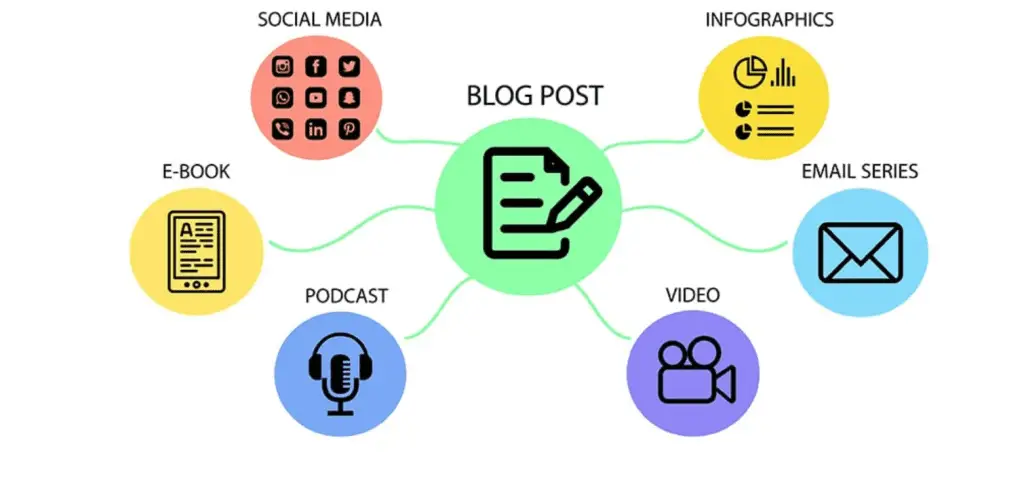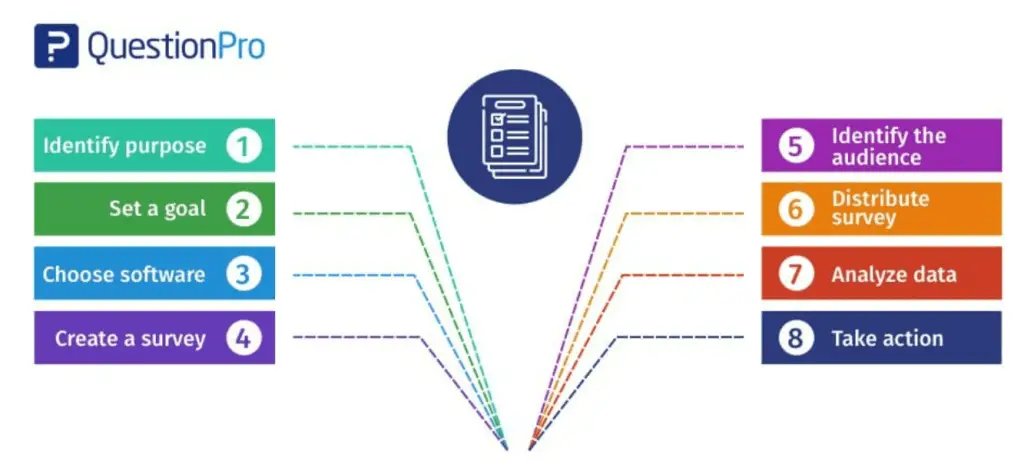I often earn from qualifying purchases. This includes Amazon Associates.
Blog posts are more than just sitting back and typing a few words on whatever comes to mind, then choosing a generic stock image, uploading it, and publishing the post.
What you put into writing a blog post is what you get out of it, which means there’s more to it than banging out words whenever inspiration strikes. You must go a few extra steps to attract readers. One of these is maintaining a consistent schedule of high quality content updates.
But there may be times when you will need more time to put in the effort necessary for high-quality content creation. This article will discuss easy-to-implement strategies for acquiring completely free, high-quality material for your site.
How to Get Free High-Quality Content for Your Blog
There are numerous ways to generate free, high-quality content for your WordPress site, from blog topic generators to other free resources and easy-to-implement techniques. And by “quality content,” we mean the kind that serves your audience and the search engines.
Below, you will find a few ways to get free content for your blog. I explain each strategy in depth so that you may implement it on your own content regardless of your niche.
1. Accept guest posts


If your website has been running for a while, you may receive guest post submissions from other site owners. It’s a good trade-off: writers provide articles to be posted on your page in exchange for backlinks and additional visibility. Everyone benefits when this collaboration takes place.
If you wish to have guest bloggers, your online presence must be strong enough to attract them. This includes having a high page ranking on SERPs, consistent organic traffic flow, and an excellent reputation in the industry. Unfortunately, this option may not be available for many of us due to these requirements.
After you’ve completed the necessary steps, let it be known that your blog is open to receiving guest posts. Subsequently, other bloggers will submit related content for you to review and approve before publishing.
Consider the following tips if you want to start publishing guest posts:
Examine your DA score
Guest posting is a common strategy used by many blog writers to get more traffic and build external links and internal links. For this reason, high search engine rankings are necessary. You can expect to receive between fifty and sixty monthly requests for guest posts on websites with a high domain authority (DA) of forty or more.
Set up a “Write for us” page
If you want to receive requests from your audience, let them know you accept guest posts. You must, therefore, have a page on your blog labeled “Write for us” or “Contributors” to encourage guest posters.
Conduct a blogger outreach
The next logical step would be to get in touch with guest bloggers who have written on other sites. Look for other blogs in your niche and check out their contributors’ pages. You can view all the people who have contributed to their blogs, along with links to their websites and social networking sites.
Publish your article
Check articles for appropriateness to your publication’s guidelines and target demographic when submitted. If it needs editing, let the blogger know so they can fix it before publishing.
Don’t just let the fresh content sit there; promote it on your social networking sites and give the author credit, too.
2. Publish an expert roundup post


The term “expert roundup post” refers to a blog post that includes contributions from several niche experts. As the host blogger, you pose an intriguing subject or topic for discussion. Then, you invite several experts to weigh in with their thoughts.
Unlike a list post, expert roundup posts take much work to write. Even though you won’t have to pay for these professionals’ assistance, you’ll still have to spend a lot of time (and energy) conducting an email outreach to gain their support.
Follow these guidelines to increase the number of responses you receive from the expert outreach:
- Send follow-up emails — Following up with a message is not desperate. It is an effective method of getting feedback from specialists who didn’t see your first email.
- Avoid excessive word counts if you want them to participate in your roundup. Please reply to the questions you posed in your outreach email.
- Explore the implications for them – Share your plans for promoting the roundup blog and how it will help bring more attention to the featured experts. A good mention in the proper context can be all it takes to get the attention of a seasoned professional.
- Be personable by custom-writing each email and remembering to use the experts’ names. Experts you’re communicating with are likely to determine if the email you’ve sent them is genuine or a copy and paste from the internet.
- Ask the experts to share your content on their message boards if they enjoyed being included in the roundup. This will lead to an increase in traffic to your blog.
3. Use Free Content Resources


Let’s investigate potential free sources of text, video, and images. The following resources have been handpicked per the most critical content requirements: originality, usefulness, and literacy.
Free Article Resources
Here’s a list of sites to go to receive free and fresh content.
ArticleCity
ArticleCity is a hub of high-quality articles that you can use to boost blog traffic and sales. It has twenty-three thousand writers and is a great place to look for new bloggers for your WordPress site.
You’ll need to create an account before selecting your material and using the website’s features.
Amazines
Amazines is a database of free articles that can help your business grow quickly. The service offers relevant content on a wide variety of subjects, including but not limited to: health, marketing, relationships, home, businesses, fashion, and beauty. You’ll need to sign up as a publisher.
EzineArticles
If you’re searching for high-quality blog writers, EzineArticles is the perfect place to look. Their homepage displays a collection of portfolios from the best freelance writers on their platform. Additionally, using their advanced search bar feature, you can easily pinpoint your desired niche areas and find talented authors who align with your writing style.
The system allows editors to access formatted text and HTML ready to copy and paste. However, this service does not guarantee the uniqueness of your material because it will enable other publishers to copy-paste the same content.
Free Image Resources
There are excellent, free image resources available to help you create a site that is unique to your brand and appealing to your target audience.
Pixabay
Pixabay can supply your site with videos, free stock photos, vector graphics, and illustrations, which can help it get promoted more quickly. The platform’s dedication is remarkable, given that publishers can alter and repurpose the photographs for their benefit.
Also unexpected is the high quality of the free images provided. You’ll likely come across many pictures bearing the Shutterstock watermark, but keep that from putting you off; you’re under no obligation to purchase them.
Pexels
Pexels is a database of free stock pictures and free images made by talented artists. The photographs are of exceptional quality and are neatly sorted into categories.
What’s more, designers have access to downloadable UI mockups. It’s also worth noting that some free photos are NASA property and can only be used under certain circumstances.
There are a lot of pictures to choose from.
Flickr
Flickr lets you search for and sort through pictures to download based on keywords or categories you provide. There are a lot of high-quality free photos from all over the world available on the service.
If you’re a website owner who publishes content that relies heavily on visuals, then Flickr is the perfect solution for you. Not only are their photos of premium quality, but they also offer flexible licensing options. To make it even easier to find just what you need, photographs can be sorted by subject or location so that your search results are more focused and accurate!
Freerange
Freerange is a website that provides users with a wide variety of stock pictures for commercial and personal use. You can use the site’s free, royalty-free photographs for everything from personal projects to business projects, and anyone can join up to access them. It’s an excellent platform for developing websites and launching advertising campaigns.
The regulations of the website can be confusing. Familiarising yourself with what is and is not permitted to avoid breaking any licenses or terms of service when using photographs is vital. Also, since the site only allows uploads up to 2 MB, photographers must compromise on image quality to meet the site’s requirements.
StockSnap.io
StockSnap.io provides free use of its image library for any online media. The service’s tag-based categorization structure makes it easy to locate the desired picture. The photographs can be used for anything, even commercial endeavors because they all have a creative commons license.
It is not required that you provide credit to the photographers, but it is very appreciated if you do. Sign up for an account to keep your selections handy without constantly re-downloading.
Free Video Resources
Here are some sites you can use for free videos on your blog.
Pixabay
To reiterate what has previously been said, Pixabay is an excellent resource for finding public-domain free stock photos and videos. Each video is licensed by the service and available for commercial use. Pixabay’s ease of use is enhanced by the fact that users need not register to download materials.
The platform gets money off of advertisements. Therefore, all the videos are completely free to watch, and there’s also a way to donate to the site. Also, the free videos you select may be used by other publishers, as with all free content sites.
Pexels Video
Pexels Video offers an extensive library of high-quality, public-domain videos for free. They’re all neatly labeled with relevant tags for easy browsing. The service’s license protects all the high quality videos available through the site.
The site offers numerous WordPress plugins, as well as apps for Android and iOS.
Videezy
Videezy has a vast library of video content, including aerial footage, landscape videos, and other background videos. Their video content is compatible with high definition and the latest 4K technology.
Commercial use is permitted, but attribution to “Videezy.com” is required. The website features both free and premium video clips.
Clipstill
Clipstill provides Cinemagraphs, or short videos, for advertising and marketing. Videos uploaded to the site are known for being visually arresting and refreshingly short.
Although the vast majority of the content requires payment to access, there are still certain videos that may be viewed without paying. High-quality monthly upgrades are also a hallmark of the platforms. Therefore, it is recommended that you bookmark the webpage and return regularly to check for changes.
Free Music Resources
Animation, gaming, and video production professionals can significantly benefit from audio tracks, but they’re helpful in any sector. Here are several websites where you may download free background music, sound effects, and other audio files to use in your projects.
Free Stock Music
Use the copyright free music from Free Stock Music in your videos, podcasts, and other media without worrying about licensing fees. You can search for songs by genre, licensing, duration, emotional tone, pace, and keywords. Be sure to include the proper credit in the end credits to avoid infringement issues.
YouTube audio library
The YouTube Audio Library is a fast and easy way to acquire professional-grade copyright free music that works with your site’s theme. Make the best selections possible by narrowing down your options based on attribution, instrument, mood, length, and genre.
The vast majority of current musical styles are represented on the platform, including rock, hip-hop, R&B, folk, and a few more. Additionally, the platform also has movie soundtracks.
The service offers access to around 1,400 songs, some of which can be utilized for private and commercial projects.
Amazon
Amazon provides sung and instrumental compositions without the need for a license fee for use in videos uploaded to YouTube or other media, including promotional videos. A wealth of content is available on the site, and all of it feels relevant. You may browse through popular albums and even preview songs before you commit to downloading.
TeknoAxe
TeknoAxe cab has 1,522 songs and is updated every week. On the site, listeners can choose from one of twenty-seven different styles of music. You can use music in both video and film productions.
All the songs available on the site are licensed under CC BY 4.0, which requires attribution when they are remixed or otherwise used.
4. Feature someone else’s infographic


Rather not embed a video from YouTube on your site? You can ease into it by featuring an infographic on your blog.
There is, however, certain information you should know before proceeding with the use of non-original infographics.
Can I use an infographic created by another blogger?
Yes, it’s perfectly fine. There is no requirement to seek approval from the work’s original author.
Bloggers can utilize one another’s infographics for reporting, criticism, commentary, teaching, and research purposes. That’s an example of “Fair Use,” which is legal for any type of copyrighted material.
You need only put your unique and honest perspective on things to ensure that you are “making something new.” Don’t simply copy the original post’s infographic and text verbatim. Create something original and exciting by taking cues from the infographic.
It’s also courteous to include a backlink and credit the source. If you have the right to use an infographic, it is best to get permission from the piece’s creator.
Using Google search to find infographics
- Search for the desired infographic by entering relevant keywords besides the quotable “infographic.”
- You can find valuable infographics in the first several results. You can also look for an infographic on image networks like Pinterest.
Are you prepared to incorporate an infographic into your next article? Consider the following tips when using an infographic on your blog:
- Collecting the essential points from the content is necessary to create a compelling infographic. Incorporate them as headings or subheadings, and you’ll have a solid framework for your material.
- Paraphrase sections on the infographic. Many infographics already have useful sections that you may use in your article. Refrain from letting your post come off as a direct rip-off of someone else’s content.
- Transform the data into practical knowledge – Many infographics are loaded with data but need to provide readers with tangible next steps. The value of your own blog posts can be increased dramatically by including specific, actionable advice.
5. Write reaction posts to YouTube videos


Have you ever watched a YouTube reaction video? It is simply a video of one YouTuber commenting on the work of another. This kind of content is so popular because the audience recognizes the creator reacting as a subject matter expert and trusts their judgment.
Can I embed a video from someone else’s channel on my blog?
Yes, you can! There are no legal ramifications for using a video from someone else’s channel on your site.
Don’t worry; there’s a good reason why video creators on YouTube let you embed their work. This motivation is the hope that other sites will promote their material, increasing traffic to their video.
YouTube reactions on your blog can have many positive effects:
- You won’t need to come up with any additional material — If you want to produce a genuine reaction blog post, the bulk of the text should be written as you view the video in question. Assuming the average length of a video on YouTube is 12 minutes, you’ll have plenty of material to write on and share in your blog post.
- You can attract the Youtube creator’s subscribers to your blog post — Maximize your reaction post’s exposure using a foolproof blog promotion approach.
- It can help your blog’s average session duration — Including a YouTube video-embed might be a terrific approach to keep your website visitors engaged. The only requirement is that the videos you embed are of excellent quality and appropriate for your blog’s subject matter. You should not show your audience a reaction video if it contains something that they may find offensive.
- An infinite well of content ideas — There are plenty of high quality videos worth responding to on YouTube. Use the search bar to find endless videos from YouTube channels related to your niche.
Creating a Reaction Post for YouTube Videos
Here are some pointers to remember if you’re unfamiliar with creating reaction posts for YouTube videos.
- You should begin with a brief introduction — It ensures that all readers understand the context of your reaction blog post. Simply provide an overview of the video’s creator and the subject matter at hand.
- Take notes on the creator’s essential points — most educational films on YouTube use a “listicle” structure for their script. Take notes and utilize them as bullet points in the reaction blog article.
- Journalize your honest reactions — Pay close attention to the video’s main discussion areas, and record how you genuinely feel about the YouTuber’s viewpoints. Rebut their claims, provide additional considerations, and offer your candid assessment.
- Finish with a summary — After you’ve written your initial draft, read it over again and extract the most critical points. Use bullet points to make this into a concise summary.
6. Use HARO


Help a Reporter Out (HARO) is an online service that puts journalists in touch with credible sources of information. What follows is a brief explanation of how it works.
- A user can join the site in two roles: a source or a journalist.
- The HARO team sends out requests for information each morning, afternoon, and night.
- Journalists use queries to solicit quotes, anecdotes, or other information from sources on various blog topics.
- When the queries have been collected, they will be sent to the appropriate sources for their response.
Becoming a HARO source can help you acquire high-quality inbound links. This time, you’ll need to register specifically as a journalist. This will allow you to solicit input from many sources to incorporate into your blog entry.
HARO has access to a wide variety of experts willing to share their knowledge and expertise with you at no fee. They will gladly supply you with top-notch, relevant content, provided you give them proper credit.
Signing up as a HARO journalist
Journalists on HARO needed to meet specific requirements.
- The first requirement is that your site is at least one month old before you submit your first query.
- They require that your site’s Alexa ranking is one million or lower.
- You can see your site’s Alexa ranking by visiting their site and using the “Browse Top Sites” function.
- Next, enter your domain name or URL and hit the “Find” button.
- A summary page will load up, showing your current Alexa ranking. If it’s under a million, you’ve met the HARO requirements to become a journalist.
7. Upload interview posts


There is some planning involved in creating interview posts. However, if you follow a specific procedure, you won’t have to pay any money to make them. This is why interview posts are a form of free media.
No deliberation over content is required on your part. You transcribe the most critical points of the interview, perhaps supplementing them with a few notes on occasion.
However, before jumping to conclusions, you must complete the arduous tasks of making interview posts.
a. Finding a question
The key to writing an excellent interview post is formulating a great question for the interviewee. A brilliant place to start is by browsing through question examples on AnswerThePublic. However, think of something more specific to make things more fascinating.
Searching websites like LinkedIn and Quora for relevant questions can also help you craft a fantastic interview post.
Let’s say you’re interested in finding out how profitable email marketing is. Simply entering that into Quora will return more relevant questions in seconds.
b. Create New Questions from the Original One
Try to pare down your interview questions to the fundamental essentials. If you overthink your interview questions, the conversation will become stilted.
Remember that the interviewees’ responses could spark insightful questions and comments. When this happens, you need to be able to think up questions to ask on the spot. Create a set of ten standard open-ended inquiries as a starting point, questions you can’t answer with a simple yes or no.
Arrange the questions logically to avoid having the interviewer skip around too much.
Additional suggestion: poll your followers for questions you can ask during the interview – Make things more engaging by revealing to the interviewee that a follower submitted the question.
c. Choose your method of interview recording
Ideally, interviews would be thoughtful exchanges characterized by the interviewer’s probing questions. You cannot achieve this by just sending an email containing a series of questions and waiting for an answer.
A face-to-face meeting is always preferable because it paves the way for capturing visual material that can complement the completed interview post.
Yet, journeying can cost a pretty penny and make free media rather costly. To avoid the expense, you could avail yourself of video chat or call applications such as AZ Screen Recorder to record your conversations with prominent figures instead.
Skype’s in-built call recording capability is ideal if you’d rather conduct the video interviews on your PC.
d. Finding the Right Person to Interview
After finishing the groundwork, your next step is to track out a knowledgeable interviewee. Google search is a great resource to use as a jumping-off point. You can find countless useful references by searching for your topic plus the phrase “blogger.
But remember, each interview slot only accommodates a single interviewee. Often, it would take too much time to interview multiple specialists. In addition, the piece would shift from an interview format to an expert roundup post.
You can also find experts on social media posts. Take Twitter as an example; it swiftly returns results that include notable individuals associated with your search terms.
It is preferable to seek experts who have been interviewed previously, even by modestly sized blogs.
e. Send out your outreach emails.
Sending out outreach emails to subject matter experts to secure an interview is not part of any larger master plan. All you have to do is be brief, precise, and forthright in your message.
Here are some suggestions:
- You shouldn’t use templates — industry experts receive hundreds of emails from different content marketers every day. Create the email from scratch rather than edit the template to include your name to stand out.
- Start with an introduction — This is the first and most important sentence of your outreach email, and it is where you will get the prospect’s attention. Simply introduce yourself and the name of your website in a single line of text.
- Get out the numbers — experts also want to know the benefits they will receive from an interview. Mentioning your site has high traffic is a great way to attract their attention.
- Talk about the interview’s focus — tease them with some details without asking all your questions in advance. If you give too much away, the expert may feel compelled to practice answers beforehand, diminishing the authenticity of their statement.
- Include that you’re happy to chat more if they’re interested, and offer a quick DM exchange to fill them in. You may provide a proposed time for the interview, but ultimately, it is the interviewee’s responsibility to choose a time that works for them.
f. Ace That Interview!
Now that you’ve scheduled the interview, you can boost your blog’s visibility. If you’ve never conducted an interview before, don’t worry; I’ve compiled a list of helpful hints that will guarantee you a successful interview:
- Get the interviewee’s attention immediately by taping a brief introduction before diving into the primary interview.
- Take notes on any follow-up inquiries as the interviewee speaks; this will allow you to respond appropriately if additional information is required. Take notes on a piece of paper or another suitable medium, and be prepared to ask clarifying questions.
- Keep your cool, watch the interview’s tempo, and don’t be afraid to bring up other topics. Focus on easing the tension between you and the interviewee.
- Don’t force the person to talk if they’re silent for a moment; instead, give them space to ponder. Ask the question only once unless the interviewee explicitly requests a repeat.
- Lastly, you should thank the interviewee and record a quick “sign-off” clip to be aired after the interview. Include a call to action, such as asking your followers who they want you to interview next.
8. Repurpose content


Are some of your blog’s older material collecting digital dust? Now is an excellent opportunity to educate yourself on content repurposing.
In brief, content repurposing is revising previously published material, often by transforming it into a new medium. You can recycle old blog posts into new formats such as infographics, PowerPoint presentations, email newsletters, etc. Naturally, you may also give new life to old postings by editing them.
Identifying suitable content for repurposing
Finding your blog’s earliest posts is as simple as scrolling to the bottom of the blog roll. You should also remember that even relatively recent posts may need to be revised, allowing you to give a poorly performing blog article a second shot by updating it.
Google Analytics is an excellent tool for seeing how all post titles on your site perform independently and analyzing your site speed. To view blog post pages:
- Open the ‘Behavior’ submenu, click ‘Site Content,’ and then pick ‘All Pages.’
- Use Page Title as the “Primary Dimension” on the “Pages” report.
- Your website’s blog entries will be listed under their respective blog titles.
- Select the ‘Pageviews’ field header to sort the list from the least-to-most views.
- Determine which blogs generate little interest, then repurpose this content to meet search engine optimization standards.
9. Compile quotes


Have you read any recent social media quotes? Quotes are a popular way for people to impart their knowledge to others, and many websites use them to obtain free content.
Making a quote compilation still requires effort, of course.
First, you still have to compose an introductory and concluding paragraph. Also, organizing them into distinct groups may be helpful if you intend to compile a long list of quotations.
However, the blog’s bulk comprises copied and pasted material.
Are Quotes duplicate content?
As long as you include a reference to your source and format your quotes correctly, they won’t count as duplicate content. You can use quote blocks on WordPress editors to make these tasks relatively simple.
Collecting quotes for your project.
You can use quote aggregation services like BrainyQuote to find the perfect quotes. BrainyQuote provides search results in the form of quote cards that can be copied and shared immediately. It includes built-in search engine crawlers to find relevant quotes on any subject.
Among BrainyQuote’s many strengths is the breadth of its quote categories. You can find quotes on any topic, from advertising and sales to fishing and inspiration to food, fitness, and interior design.
10. Conduct a survey


Another excellent strategy for writing blog posts for your website is to conduct surveys and polls. They are simple to implement and can yield valuable insights you have yet to consider.
You can learn more about your target audience’s motivations and preferences through a survey. This lets you write content that directly responds to those problems.
By conducting a consumer feedback survey about new goods, you can get content ideas for blog posts that address commonly asked questions (FAQs). Plus, search engines give this type of information a high ranking because of its specificity.
11. Try blog topic generators


For those moments when you’re struggling to come up with engaging content ideas, take advantage of an online idea generator! With just a few clicks, these generators can help spark the motivation needed to get your project rolling. And best of all: they are completely free and easy to use! Consider it as the extra push you require to get creative again.
For instance, SEO Pressor has a Blog Title Generator where you can type in a keyword and get a list of potential blog titles. The material still needs to be written, but it’s more likely to be engaging and search engine-friendly.
Conclusion
Applying the approaches outlined above, creating endless amounts of free blog content should be effortless. What’s more, many of these techniques are easy to apply and will only take a few hours on average for you to pen an article!
You can put different strategies to the test on a routine basis until you find the one that best suits your blog’s needs. Best of luck!
Amazon and the Amazon logo are trademarks of Amazon.com, Inc, or its affiliates.






